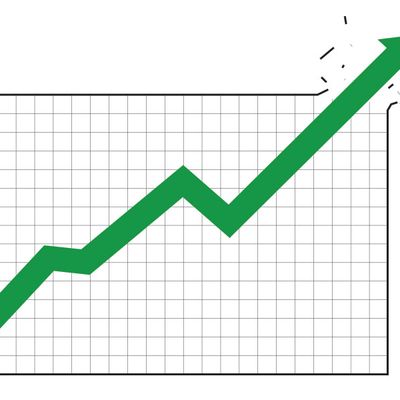
Financially speaking, it could barely matter less that the Standard and Poor’s 500, a broad index of 500 leading companies, hit an all-time high today, closing at 1569.
As Matt Yglesias and many other party poopers on Twitter have pointed out, the S&P’s all-time high is only an all-time high if you don’t factor in inflation and dividends. If you do, it’s not so much an all-time high as a highest-in-thirteen-years, which is not nearly as exciting.
But I’m tempted to defend the concept, if not the mathematical accuracy, of celebrating the S&P’s high, and the Dow’s high before that. Because while there are much better indicators of overall economic health than stock market indices, the Dow and S&P are what most normal people who don’t pay close attention to business news think constitute Big Important Numbers. And it’s crucial, for reasons both economic and social, to acknowledge that what normal people think are Big Important Numbers actually matter.
Shortly after I poured water on the Dow’s all-time high earlier this month, I ran into a friend who doesn’t follow finance or the markets, but reads a lot of general-interest news, and had seen my story.
“So, everything is horrible?” he said.
I can see why he took that message from what I wrote. It’s true that there is, if you look, no shortage of depressing economic data to be found. Unemployment isn’t shrinking as fast as it should, and even though corporate profits are booming, GDP isn’t getting much of a jolt, and median wages are still way off their pre-crisis levels. Our fiscal policy is still a mess, and the effects of sequestration are causing job losses and painful spending cuts all over the country.
And yet, my friend got the wrong takeaway from my story – or at least an incomplete one. Because the American economy is, despite lots of evidence to the contrary, doing much better than it was just a few years ago. And people should feel happy about the direction the arrows are moving – even if those arrows don’t represent the full picture of what’s going on.
If your memory is short, just look at this front-page New York Times story from January 2009. I picked it at more or less random – any story from 2009 could do. It’s utterly terrifying. The Bureau of Labor Statistics had just announced that U.S. employers had shed 524,000 jobs in the span of a month. (The number was later revised up to 661,000.) That’s more than half a million jobs, vaporized in the span of four weeks, in an economic environment that the Times described as a “pervasive fear among employers that if they fail to shed workers quickly their companies may go under.” This wasn’t just bad news – it was apocalyptic.
Obviously, it’s not exactly news to finance watchers that things have gotten better since 2009. But to normal people – in Ohio, where I’m from, or in Illinois or Queens or Boulder, Colorado – market watching is more about feeling than fact. When people feel like the economy is doing better, they start having conversations with their spouses about going on vacation. They think about investing in a house. They switch from cash-hoarding austerity mode into something more resembling their natural levels of spending and investing.
Now, naive and baseless confidence isn’t always a great thing (see: Lehman Brothers). But the economy is genuinely, empirically improving now. And people’s economic cues – about whether things are doing better or worse, about whether the family can take that trip to Disneyland this year after all – are based largely on what they see in their bank accounts, and what they see in the news. If normal people watch Anderson Cooper announce that the S&P 500 is at an all-time high, even if it doesn’t mean what they think it means, the resulting confidence can affect their spending patterns and business practices, and it can help along an economic recovery that has been held back in part by fear.
In short: The numbers that people think matter often do matter, because people think they matter. It sounds tautological. And yet, it explains a lot about why people remain attached to the S&P and the Dow, and why we shouldn’t begrudge them a little optimism for feeling excited today.





























